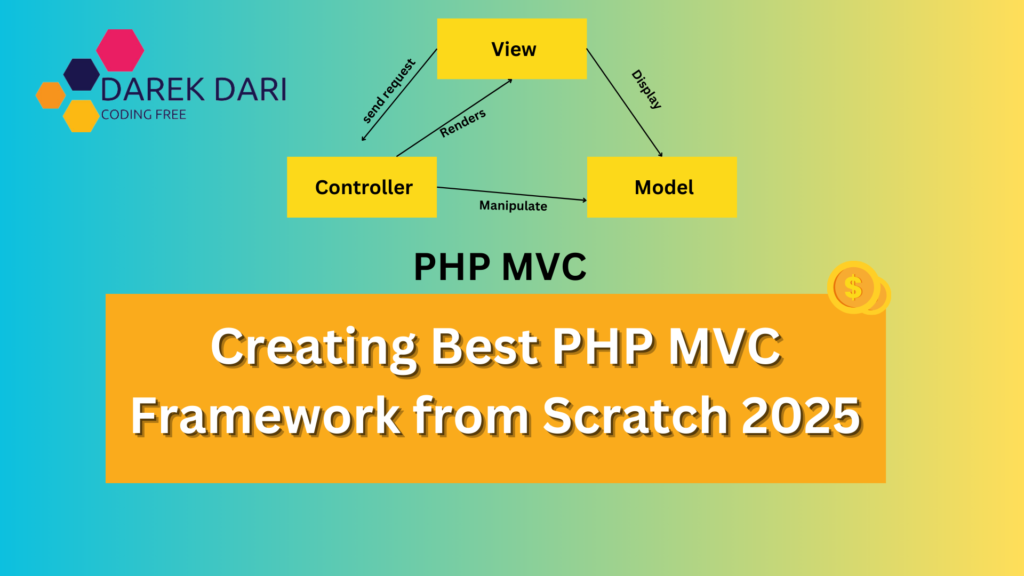
Table of Contents
Hey everyone, tech enthusiasts and coding aficionados! Have you ever imagined creating your very own PHP MVC framework from the ground up? Well, brace yourself for an in-depth exploration of web development excellence as we fast forward to 2025.
PHP Projects
- Quiz Application in PHP
- PHP Image Gallery Project Source Code
- Best 200 Questions Game in PHP
- Bulletin Board PHP Project
- Content Management System (CMS) PhP Project
- Event Management System Project in PHP
- Personal Blog with PHP
- Chatbot in PHP
- URL Shortenee in php
- Creating Best PHP MVC Framework from Scratch
- Recipe Sharing Platform with PHP
- Job Board with PHP
In this article, we will uncover the secrets of constructing a PHP MVC framework that is not only sleek but also powerful.
From mastering MVC architecture to harnessing the power of modular design, we will provide you with the necessary tools to develop web applications that truly stand out.
Whether you are an experienced developer looking to take your skills to the next level or a curious coder eager to strengthen your PHP abilities, come along on this thrilling journey.
Get ready to blend code with creativity and build frameworks that thrive in the fast-paced world of web development.
Let’s roll up our sleeves and create something incredible together!
php exercises
php lab exercises
php mvc folder structure best practices
php mvc framework from scratch
php mvc from scratch
php mvc project
php photo database
php photo gallery
php practice exercises
php project source code
php projects source code
php projects with source code github
php realtime chat
What is MVC in PHP?
Yes, are you familiar with PHP MVC? It represents Model-View-Controller, a robust design pattern widely utilized in software development, particularly for creating web applications.
This pattern divides an application into three interconnected components: Model, View, and Controller. Each component plays a distinct role in ensuring that your application is modular, maintainable, and easily expandable.
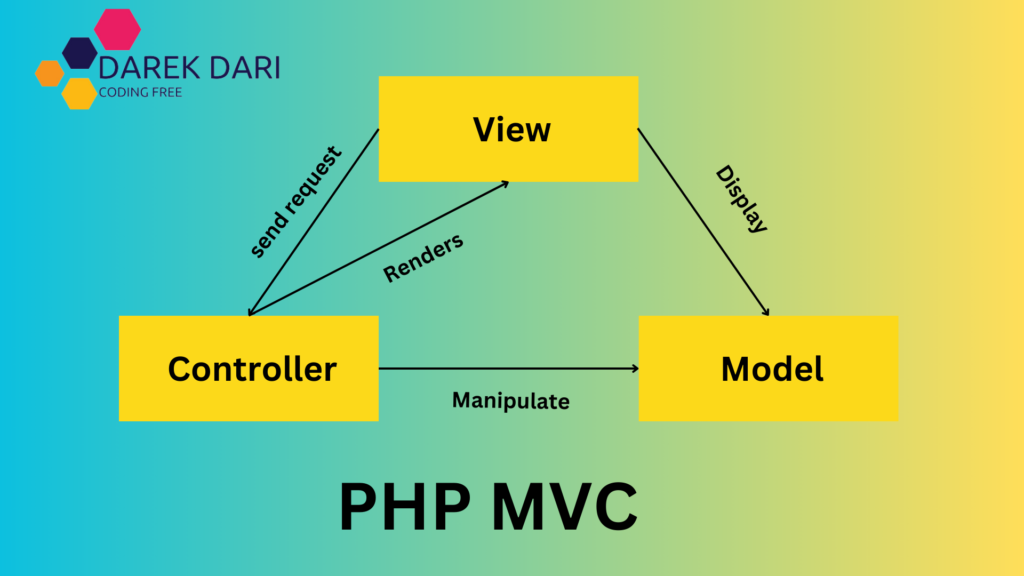
Model (M): The Model in your application manages data and business logic, handling tasks such as fetching data from databases, processing it, and storing it back. This separation ensures that your data operations are well-organized and reusable throughout your MVC application.
View (V): The View layer brings your application’s user interface to life, presenting data to users in a readable format. It consists of HTML templates combined with PHP code that dynamically generates content based on the data retrieved from the Model.
Controller (C): Serving as the intermediary between the Model and the View, the Controller processes user requests. It determines which Model methods to call, handles user input, and selects the appropriate View to show the response.
This separation of duties ensures that your application’s business logic remains distinct from its presentation layer in MVC architecture.
The MVC pattern is not just about organizing code; it’s about enhancing collaboration among developers, improving code maintainability, and making future enhancements easier.
What is MVC used for?
| Component | Purpose | Functionality | Benefits |
|---|---|---|---|
| Model | Represents the application’s data and business logic. | Handles data manipulation, storage, and retrieval operations. Interacts with databases or external APIs for CRUD operations. | Encapsulates data-related operations, improves code maintainability, facilitates code reuse, and enhances scalability. |
| View | Represents the presentation layer of the application. | Displays data to users in a specific format (e.g., HTML, XML, JSON). Renders information retrieved from the Model for user consumption. | Provides flexibility in UI design, allows for customization based on user preferences or device types, and separates UI presentation from business logic. |
| Controller | Acts as an intermediary between the Model and the View. | Receives user input, updates the Model’s state, retrieves data from the Model, and passes data to the appropriate View for rendering. Manages application flow and logic. | Centralizes input handling and response logic, promotes modular and maintainable application design, and facilitates separation of concerns. |
Use Cases of MVC
Web applications are created using web development frameworks like Laravel, Django, and Ruby on Rails to ensure scalability and maintainability.
Desktop applications are developed with desktop GUI frameworks such as Java Swing and .NET Framework to effectively structure applications into manageable components.
Mobile applications utilize mobile app frameworks like SwiftUI and Android Architecture Components to efficiently organize code and increase reusability.
Software design encourages separation of concerns, enhances code readability, supports agile development practices, and fosters collaboration among development teams.
This chart outlines the purpose, functionality, and advantages of each MVC component, as well as its applications in various software development fields.
php mvc project source code
php photo database
php photo gallery
php project source code
php projects source code
php projects with source code
php real time application
php real time chat application
php realtime chat
What You Need to Get Started
Before diving into creating your MVC framework, make sure you’re comfortable with the following concepts related to MVC:
- PHP Object-Oriented Programming (OOP): This forms the backbone of modern PHP development. Understanding classes, objects, inheritance, and encapsulation will help you structure your MVC framework effectively.
- Composer: As your go-to PHP package manager, Composer simplifies dependency management. Initializing your project with
composer initsets the stage for seamlessly integrating third-party libraries and managing project dependencies in your PHP MVC project. - HTML/CSS: While not mandatory for the core framework development, basic knowledge of HTML/CSS comes in handy for crafting user-friendly interfaces. Views in PHP MVC frameworks typically use HTML for structure and CSS for styling, making your application visually appealing and user-friendly.
Setting Up Your Project
To kick off your journey in building a PHP MVC framework, follow these initial steps for your PHP MVC framework project:
- Create a Project Directory: Start by creating a new directory for your MVC project and open it in your favorite code editor.
- Initialize Composer Project: In your terminal, run
composer initto set up a new Composer project within your project directory. This command will guide you through setting up basic project details and generate acomposer.jsonfile, which manages your project’s dependencies and autoloads classes in your PHP MVC application.
composer initDuring setup, you can leave most fields blank or as default, except for dev dependencies. When prompted to add dependencies, simply type “no” for now.
Once complete, Composer will configure PSR-4 autoloading, making it easier to include classes in your PHP MVC project.
- Update Namespace: For simplicity, modify the namespace in
composer.jsonunderpsr-4to a shorter alias, such as"App\\".
"Maheshsamudra\\SimplePhpMvcStarter\\": "App\\"- Autoload Classes: Execute
composer dump-autoloadin your terminal to update autoloaded classes based on your modified namespace configuration. This ensures that classes are autoloaded and readily accessible throughout your PHP MVC project without manual inclusion.
composer dump-autoloadOrganizing Your PHP MVC Project
Maintain clarity and separation of concerns by organizing your PHP MVC project into structured directories:
public/: This directory serves as the web-accessible entry point for your PHP MVC application. Place files that are accessible to the public, such as index.php.
src/: This directory houses the core source code of your PHP MVC framework, organized into subdirectories related to PHP MVC:
Controllers/: Contains controller classes responsible for handling user requests, invoking appropriate Model methods, and selecting Views to render responses in your PHP MVC application.
Models/: Stores Model classes representing application data structures, encapsulating data manipulation methods and business rules for your PHP MVC framework.
Routes/: Houses routing configuration files defining URL paths and corresponding controller actions in your PHP MVC project.
Views/: Contains view templates (HTML files with embedded PHP code) responsible for rendering data fetched from Models in your PHP MVC application.
vendor/: Automatically generated by Composer, this directory stores installed dependencies and their autoloaded classes, facilitating seamless integration of third-party libraries into your PHP MVC project.
Building the Core Components of Your PHP MVC Framework
Setting up the Public Folder for Your PHP MVC Application
Create an index.php file in the public/ directory as the primary entry point of your PHP MVC application.
This file initializes necessary components and routes incoming requests to appropriate controllers in your PHP MVC project.
<?php
require '../vendor/autoload.php'; // Load Composer autoloaded classes for your PHP MVC project
$router = require '../src/Routes/index.php'; // Initialize routing configuration for your PHP MVC applicationHandling Routes in Your MVC Application
Implement a Router.php class in the src/ directory to manage URL routing within your MVC application.
The Router maps URL paths to corresponding controller actions based on HTTP request methods (GET, POST, etc.) in your PHP MVC project.
<?php
namespace App;
class Router
{
protected $routes = [];
// Method to add routes based on HTTP request methods in your MVC application
private function addRoute($route, $controller, $action, $method)
{
$this->routes[$method][$route] = ['controller' => $controller, 'action' => $action];
}
// Define GET route in your PHP MVC application
public function get($route, $controller, $action)
{
$this->addRoute($route, $controller, $action, "GET");
}
// Define POST route in your PHP MVC application
public function post($route, $controller, $action)
{
$this->addRoute($route, $controller, $action, "POST");
}
// Dispatch incoming request to appropriate controller action in your MVC application
public function dispatch()
{
$uri = strtok($_SERVER['REQUEST_URI'], '?'); // Extract URI path for routing in your PHP MVC application
$method = $_SERVER['REQUEST_METHOD']; // Get HTTP request method for routing in your PHP MVC application
// Check if route exists for requested URI and method in your PHP MVC application
if (array_key_exists($uri, $this->routes[$method])) {
$controller = $this->routes[$method][$uri]['controller']; // Retrieve controller class for routing in your PHP MVC application
$action = $this->routes[$method][$uri]['action']; // Retrieve controller action method for routing in your PHP MVC application
// Instantiate controller and call action method for routing in your PHP MVC application
$controller = new $controller();
$controller->$action();
} else {
throw new \Exception("No route found for URI: $uri"); // Throw exception if route not found in your MVC application
}
}
}Controllers — Handling the Home Page in Your PHP MVC Application
Create a base Controller.php class in the src/ directory to encapsulate common functionality and methods shared among controllers in your PHP MVC application.
<?php
namespace App;
class Controller
{
// Method to render view with optional data for your PHP MVC application
protected function render($view, $data = [])
{
extract($data); // Extract associative array into variables for your PHP MVC application
include "Views/$view.php"; // Include view template file for rendering in your PHP MVC application
}
}Next, create a HomeController.php class inside the src/Controllers/ directory to handle requests related to the home page in your MVC application.
Implement an index method within HomeController.php to fetch data from the Model layer and render the corresponding view in your MVC application.
<?php
namespace App\Controllers;
use App\Controller;
use App\Models\Journal;
class HomeController extends Controller
{
// Method to handle requests to the home page in your PHP MVC application
public function index()
{
// Sample data (journals) for demonstration in your PHP MVC application
$journals = [
new Journal('My Third Journal Entry', '2023'),
new Journal('My Second Journal Entry', '2022'),
new Journal('My First Journal Entry', '2021')
];
// Render 'index' view template with data in your PHP MVC application
$this->render('index', ['journals' => $journals]);
}
}Adding the Views in Your PHP MVC Application
Finally, create an index.php file inside the src/Views/ directory to serve as the view template for the home page in your MVC application.
The view template integrates PHP code (foreach loop) to iterate over fetched data from the Model and dynamically render HTML content in your PHP MVC application.
<h1>Welcome to Simple PHP MVC Starter!</h1>
<ul>
<?php foreach ($journals as $journal) : ?>
<li><?= $journal->name ?> (<?= $journal->publishedYear ?>)</li>
<?php endforeach; ?>
</ul>What is MVC Laravel?
In Laravel, the MVC (Model-View-Controller) pattern is a key architectural structure that divides web applications into three interconnected components:
Model: In Laravel, Models represent the data layer of your application. They encapsulate the business logic and interact with the database through Laravel’s Eloquent ORM (Object-Relational Mapping) system. Models define the structure and behavior of data entities, allowing you to perform database operations such as querying, inserting, updating, and deleting records.
View: Views in Laravel are responsible for presenting data to the user in a readable format. They combine HTML markup with Blade, Laravel’s powerful templating engine. Views determine how information retrieved from the Controller is displayed to users. Blade templates facilitate code reusability and maintainability by supporting features like template inheritance, conditional statements, and loops.
Controller: Controllers act as intermediaries between Models and Views in Laravel. They handle incoming HTTP requests from clients, process input data, interact with Models to perform business logic or database operations, and then pass data to the appropriate View for rendering. Controllers are responsible for defining the application’s logic flow and coordinating actions based on user interactions.
MVC Implementation in Laravel
Laravel utilizes a Model-View-Controller (MVC) architecture for organizing code. Here’s how it works:
Routing: Incoming HTTP requests are directed to Controller actions based on defined routes in routes/web.php or routes/api.php. These routes specify which Controller method should handle each type of request (GET, POST, etc.).
Controllers: Laravel Controllers are PHP classes located in the app/Http/Controllers directory. You can create Controllers using artisan commands (php artisan make:controller) and define methods that correspond to different routes or actions within your application.
Views: Views in Laravel are stored in the resources/views directory. These are typically Blade templates that allow you to embed PHP code directly within HTML, making it easier to generate dynamic content based on data passed from Controllers.
Models: Laravel Models are PHP classes found in the app directory. They extend Laravel’s Illuminate\Database\Eloquent\Model class and represent database tables or collections. Eloquent ORM simplifies database interactions by providing an expressive syntax for defining relationships, querying data, and performing CRUD operations.
Step 1. Model (app/Models/Post.php)
<?php
namespace App\Models;
use Illuminate\Database\Eloquent\Model;
class Post extends Model
{
protected $fillable = ['title', 'content'];
}Step 2. Controller (app/Http/Controllers/PostController.php)
<?php
namespace App\Http\Controllers;
use App\Models\Post;
use Illuminate\Http\Request;
class PostController extends Controller
{
public function index()
{
$posts = Post::all();
return view('posts.index', compact('posts'));
}
public function create()
{
return view('posts.create');
}
public function store(Request $request)
{
$validatedData = $request->validate([
'title' => 'required|max:255',
'content' => 'required',
]);
$post = Post::create($validatedData);
return redirect()->route('posts.index')
->with('success', 'Post created successfully.');
}
// Other methods like show, edit, update, destroy can be added here
}Step 3. View (resources/views/posts/index.blade.php)
@extends('layouts.app')
@section('content')
<div class="container">
<h2>Posts</h2>
<a href="{{ route('posts.create') }}" class="btn btn-primary mb-3">Create Post</a>
<table class="table">
<thead>
<tr>
<th>Title</th>
<th>Content</th>
<th>Action</th>
</tr>
</thead>
<tbody>
@foreach ($posts as $post)
<tr>
<td>{{ $post->title }}</td>
<td>{{ $post->content }}</td>
<td>
<a href="{{ route('posts.edit', $post->id) }}" class="btn btn-sm btn-warning">Edit</a>
<form action="{{ route('posts.destroy', $post->id) }}" method="POST" style="display: inline;">
@csrf
@method('DELETE')
<button type="submit" class="btn btn-sm btn-danger">Delete</button>
</form>
</td>
</tr>
@endforeach
</tbody>
</table>
</div>
@endsectionRouting (routes/web.php)
use App\Http\Controllers\PostController;
Route::get('/posts', [PostController::class, 'index'])->name('posts.index');
Route::get('/posts/create', [PostController::class, 'create'])->name('posts.create');
Route::post('/posts', [PostController::class, 'store'])->name('posts.store');
Route::get('/posts/{id}/edit', [PostController::class, 'edit'])->name('posts.edit');
Route::put('/posts/{id}', [PostController::class, 'update'])->name('posts.update');
Route::delete('/posts/{id}', [PostController::class, 'destroy'])->name('posts.destroy');Explanation
The Post model defines the structure of a post, including fields such as title and content. It utilizes Laravel’s Eloquent Model to communicate with the database.
PostController manages CRUD operations for posts, with functions like index (to list posts), create (to display form for new post creation), store (to save new post), etc. These methods interact with the Post model and send data to the View.
index.blade.php showcases a list of posts fetched from the PostController ($posts). It utilizes Blade syntax to iterate through posts and exhibit their title and content. It also offers links for creating, editing, and deleting posts.
Routing in Laravel maps HTTP requests to Controller methods through route definitions (routes/web.php). Each route specifies an HTTP verb (GET, POST, PUT, DELETE) and the corresponding Controller method to execute.
This example demonstrates how Laravel’s MVC architecture segregates concerns (data, presentation, and logic), improving code organization, reusability, and maintainability in web application development.
Is MVC a programming language?
MVC (Model-View-Controller) is not a programming language itself, but rather a software architectural pattern used in software engineering and web development.
The MVC pattern outlines how an application should be structured into three interconnected components:
- Model: Represents the application’s data and business logic.
- View: Displays the data to the user in a specific format (e.g., HTML, XML, JSON).
- Controller: Manages user input, updates the Model, and selects Views for display.
Developers apply the MVC pattern in various programming languages such as PHP, Python, Java, JavaScript, Ruby, etc., utilizing frameworks and libraries that support MVC architecture.
Examples include Laravel (PHP), Django (Python), Spring (Java), Angular (JavaScript/TypeScript), and Ruby on Rails (Ruby).
In summary, MVC serves as a design pattern rather than a programming language, offering a structured method for organizing code and separating concerns within applications.
Its aim is to enhance code maintainability, reusability, and scalability by distributing responsibilities among distinct components.
Is MVC good or bad?
Certainly! Here’s a table summarizing the considerations for MVC:
| Aspect | Evaluation |
|---|---|
| Advantages | Separates concerns effectively, enhancing code organization and maintainability. Promotes modularity and code reusability. Facilitates collaboration among team members. |
| Challenges | Initial complexity in setup and understanding. Potential learning curve for developers unfamiliar with MVC. Possible overhead in smaller or simpler applications. |
| Implementation Considerations | Requires careful implementation to avoid tight coupling between components. Performance overhead may vary based on framework and application size. |
| Suitability | Ideal for medium to large-scale applications where scalability, maintainability, and teamwork are priorities. Consider alternative patterns for smaller or simpler projects. |
Advantages: MVC architecture is great at separating concerns (Model, View, Controller), improving code organization, and promoting collaboration. It enhances modularity and reusability, making it ideal for complex applications where scalability and maintainability are crucial.
Challenges: Implementing MVC requires understanding and managing its complexity, which can be challenging for developers new to the pattern. It may add overhead in smaller projects where simpler architectures could be sufficient.
Implementation Considerations: Careful implementation is key to maintaining loose coupling between components and reducing any potential performance overhead that may result from abstraction layers and component interactions.
Suitability: MVC is a good fit for projects that prioritize scalability and maintainability, benefiting from its structured approach and division of responsibilities. However, for smaller or simpler projects, alternative patterns or frameworks may provide more straightforward solutions without the added complexity of MVC.
What is replacing MVC?
In today’s software development, various architectural patterns and paradigms have emerged as alternatives to or alongside MVC.
MVVM (Model-View-ViewModel)
MVVM, or Model-View-ViewModel, is a design pattern commonly used in front-end development to improve data binding and separate concerns effectively.
It helps in clearly distinguishing between the user interface (View) and the data management and business logic (ViewModel).
This separation not only enhances code organization but also boosts reusability and testability of components.
Frameworks like Angular and Vue.js make great use of MVVM. In these frameworks, the ViewModel acts as a bridge between the View and the Model (data layer).
It prepares data from the Model for display in the View and manages user interactions, updating the Model when necessary.
This architecture not only improves the maintainability of large applications but also encourages collaboration among teams working on different parts of the application.
By embracing MVVM, developers can build more modular and scalable front-end applications, reducing the chances of unintended effects in other areas when making changes to one part of the codebase.
This approach is especially valuable in environments where rapid development and iterative improvements are essential, providing a structured way to handle complex user interfaces and data interactions.
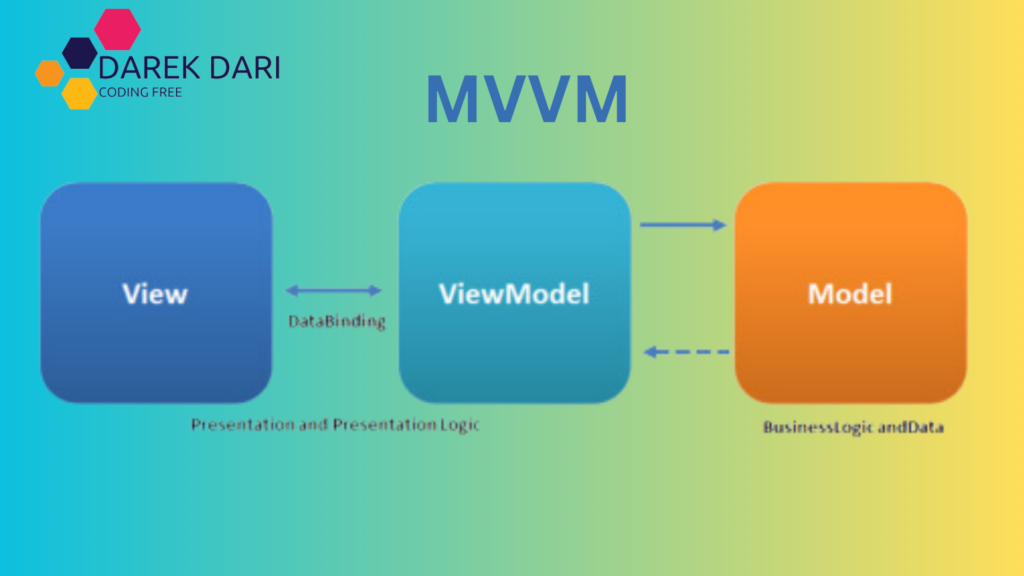
FLUX and Redux Architecture
FLUX and Redux have transformed the way state is handled in front-end applications, especially with React.js.
FLUX, created by Facebook, introduces a one-way data flow that simplifies state management. The key idea is to have a single source of truth—the global store—that contains the entire application state.
This centralized store ensures that changes to the state are predictable and easier to manage across different components.
Redux, a popular implementation of the FLUX pattern, takes this concept further by formalizing actions and reducers.
Actions are data payloads that send information from the application to the store, while reducers define how the state changes in response to actions.
This structure improves clarity, predictability, and enables powerful debugging and state inspection tools.
By enforcing a strict one-way data flow, FLUX and Redux reduce complexity in front-end development. Components focus on rendering data and responding to user actions, while business logic and state management are handled separately and centrally.
This separation promotes code reusability, testability, and maintainability, making collaboration on large-scale applications easier for teams.
In conclusion, FLUX and Redux are essential tools for React.js developers, allowing them to create robust, scalable, and efficient user interfaces that can manage complex state interactions with clarity and ease.
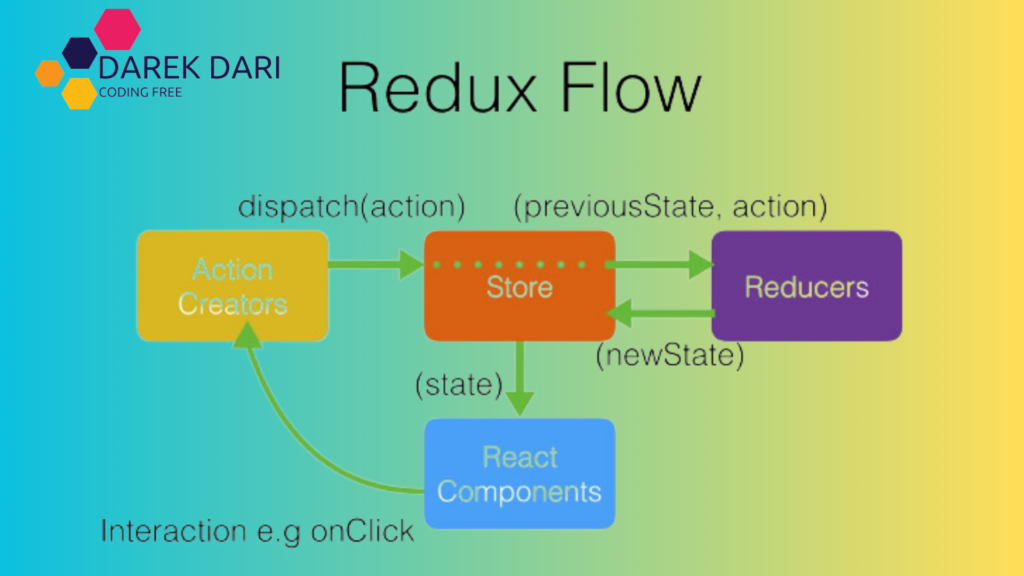
photo gallery php
php exercises
php exercises and solutions
php exercises and solutions pdf
php exercises online
php lab exercises
php mvc framework from scratch
php mvc from scratch
Microservices Architecture
Microservices architecture has become increasingly popular in modern software development as it aims to improve scalability, agility, and maintainability of applications.
This architecture breaks down monolithic applications into smaller, loosely coupled services, each handling specific business functions.
These services can be deployed independently, allowing teams to develop, deploy, and scale them separately based on the application’s requirements.
Internally, microservices often use MVC or similar patterns to manage their internal logic and data. However, what sets microservices architecture apart is how these services communicate with each other—typically through lightweight APIs and messaging protocols.
This decoupled communication style enables each microservice to evolve independently without impacting the entire system, leading to faster development cycles and easier integration of new features.
The advantages of microservices architecture are plentiful. It allows organizations to scale application components independently, enhancing fault isolation and resilience.
Teams can select the most appropriate technology stack for each microservice, promoting innovation and flexibility. Moreover, microservices simplify testing and debugging, as well as enhance deployment automation and continuous integration practices.
Nevertheless, implementing microservices architecture comes with its own set of challenges, including managing distributed systems, ensuring data consistency across services, and establishing effective service discovery and communication protocols.
Despite these obstacles, many organizations believe that the benefits of microservices—such as scalability, agility, and increased developer productivity—outweigh the complexities involved.
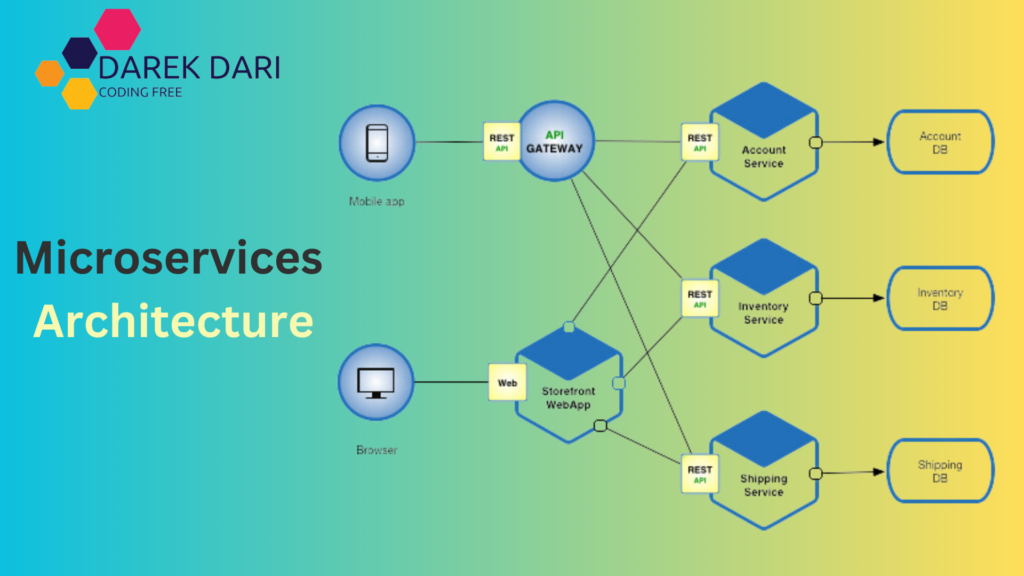
Serverless Architecture
Serverless architecture simplifies infrastructure management by shifting responsibilities to cloud providers, allowing developers to focus on writing code.
Functions as a Service (FaaS) enable developers to deploy individual functions triggered by specific events, promoting modular development and automatic scaling based on demand.
Key features of serverless architecture include:
- Event-Driven Execution: Functions are triggered by events like HTTP requests or database changes, promoting focused development.
- Scalability and Flexibility: Serverless platforms handle scaling based on requests, freeing developers from server management.
- Pay-Per-Use Billing: Charges are based on actual resource consumption, potentially saving costs compared to traditional deployments.
- Reduced Operational Overhead: By offloading server management to providers, serverless architecture reduces complexity and allows teams to focus on delivering value through applications.
Serverless platforms are known for their seamless integration with various cloud services like databases, storage solutions, and messaging queues, making it easier to develop complex applications without worrying about infrastructure setup and management.
However, serverless architecture also comes with its own set of challenges, including vendor lock-in, cold start latency, and potential complexities in managing distributed systems and debugging in production environments.
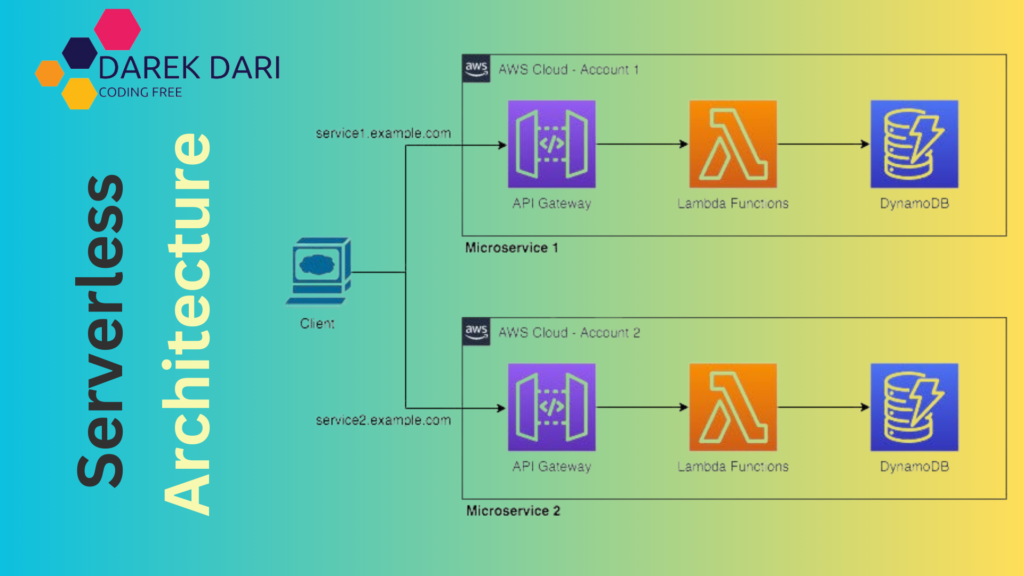
Component-Based Architecture
Component-Based Architecture, as showcased in popular frameworks such as React.js and Vue.js, focuses on breaking down user interfaces into reusable, self-contained components.
Each component contains its own logic, data, and presentation, promoting modularity and reusability across the application.
This method encourages a clear separation of concerns, simplifying the management and scalability of intricate user interfaces.
Developers have the ability to construct larger components from smaller, nested components, establishing a hierarchical structure that reflects the complexity of the UI.
This model of composition streamlines the development of sophisticated UIs by enabling developers to concentrate on constructing and integrating smaller, more manageable components.
Through the encapsulation of functionality within components, Component-Based Architecture improves maintainability and encourages collaboration among developers.
Teams can work on isolated components without interfering with each other’s code, fostering parallel development and seamless feature integration.
This strategy aligns effectively with agile development methodologies, empowering teams to iterate swiftly and deliver responsive, scalable applications.
In essence, Component-Based Architecture has transformed front-end development by offering a structured and effective approach to constructing user interfaces that are modular, reusable, and simpler to maintain.
Its core principles of encapsulation, reusability, and composability have become fundamental in the creation of contemporary, interactive web applications.

These patterns reflect diverse approaches to addressing scalability, maintainability, and flexibility challenges in modern software systems, supplementing or refining the principles established by MVC.
Conclusion
By dividing data management (Model), user interface (View), and application logic (Controller), you’ve laid a strong groundwork for future enhancements and expansions in your MVC application.
While this guide covers the essentials, keep in mind that developing a robust MVC framework is an ongoing educational experience.
It’s an excellent method to deepen your knowledge of PHP, object-oriented programming, and web development, adding value to your skill set and professional portfolio in MVC.
For the complete example code and further exploration, visit the GitHub repository. Thank you for embarking on this journey with us, and enjoy coding with MVC!

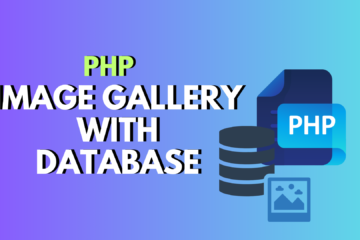


0 Comments